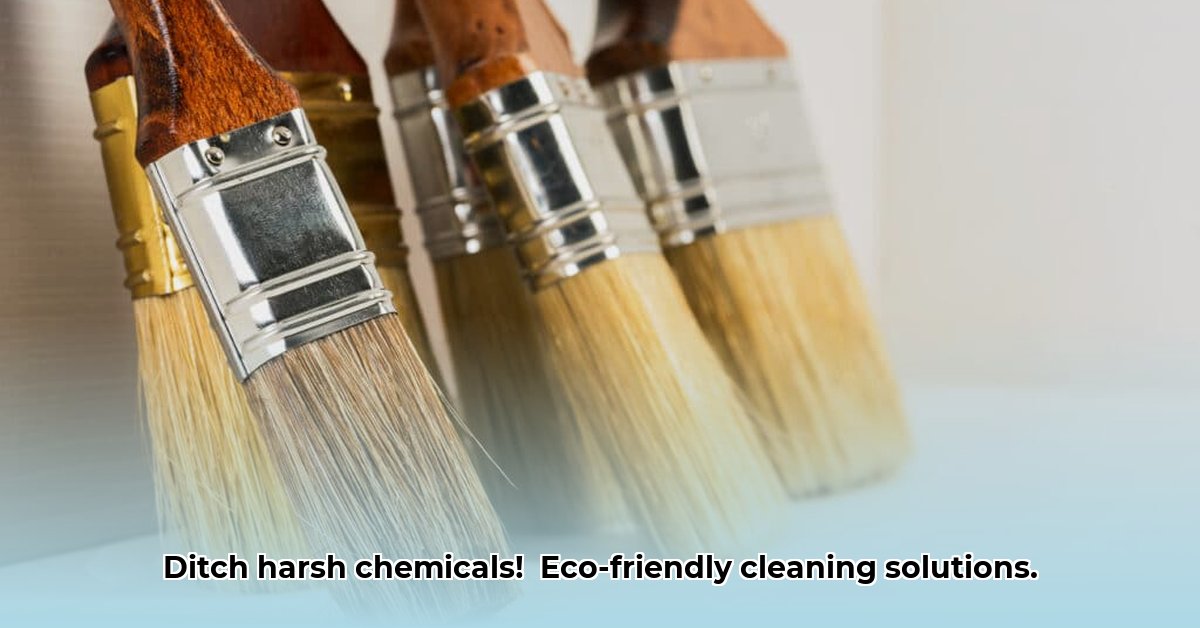
White Spirit: The Risks and the Search for Safer Alternatives
White spirit, a common solvent used for cleaning brushes and thinning paints, presents significant health and environmental risks. Its strong solvents, while effective, are also flammable and potentially toxic if inhaled or absorbed through the skin. Long-term exposure can have serious health consequences, and its environmental impact is considerable. This article explores safer alternatives, comparing their efficacy, safety, and environmental footprint to help you make informed choices. For more information on white spirit, see this detailed guide.
Safer Alternatives: A Detailed Comparison
Several alternatives offer comparable cleaning and thinning power with reduced environmental and health impacts. We'll examine the following: Safer Spirit, Clear Spirit, Acetone, Isopropyl Alcohol, Turpentine, and Bio-based Solvents.
Safer Spirit
- Description: Often citrus-based and biodegradable.
- Efficacy: Excellent cleaning and good thinning power.
- Safety: Low toxicity and flammability.
- Environmental Impact: Low.
- Cost: Moderate.
Clear Spirit
- Description: A general-purpose cleaner.
- Efficacy: Good cleaning, fair thinning power.
- Safety: Low toxicity and flammability.
- Environmental Impact: Low.
- Cost: Moderate.
Acetone
- Description: A strong solvent.
- Efficacy: Excellent cleaning and thinning power.
- Safety: Moderate toxicity, high flammability. Use with extreme caution.
- Environmental Impact: Moderate.
- Cost: Low.
Isopropyl Alcohol
- Description: Commonly used disinfectant.
- Efficacy: Good for light cleaning, poor thinning power.
- Safety: Low toxicity and flammability.
- Environmental Impact: Low.
- Cost: Low.
Turpentine
- Description: A traditional solvent.
- Efficacy: Excellent cleaning and thinning power.
- Safety: High toxicity and flammability. Consider safer alternatives.
- Environmental Impact: Moderate to High.
- Cost: Moderate.
Bio-based Solvents
- Description: Solvents derived from renewable resources. Efficacy and safety vary widely depending on the specific product.
- Efficacy: Varies greatly; check product labels carefully.
- Safety: Generally low toxicity; always check the specific product label.
- Environmental Impact: Low.
- Cost: Moderate to High.
Note: The terms "low," "moderate," and "high" represent relative comparisons based on available data. Always consult the specific product's Safety Data Sheet (SDS) for detailed information.
Comparative Analysis: Choosing the Right Alternative
The table below summarizes the key features of each alternative, allowing for easy comparison. Remember, the "best" option depends on your specific needs.
| Alternative | Flammability | Toxicity | Environmental Impact | Cost | Cleaning Power | Thinning Power |
|---|---|---|---|---|---|---|
| Safer Spirit | Low | Low | Low | Moderate | Excellent | Good |
| Clear Spirit | Low | Low | Low | Moderate | Good | Fair |
| Acetone | High | Moderate | Moderate | Low | Excellent | Excellent |
| Isopropyl Alcohol | Low | Low | Low | Low | Good | Poor |
| Turpentine | High | High | Moderate-High | Moderate | Excellent | Excellent |
| Bio-based Solvents | Low to Moderate | Low | Low | Moderate-High | Varies greatly | Varies greatly |
Actionable Steps: Safe Solvent Selection & Usage
Choosing the right solvent depends on your specific application. Follow these steps for safer solvent handling:
Assess the Task: For light cleaning, isopropyl alcohol is sufficient. For heavier cleaning or paint thinning, consider Safer Spirit or a bio-based alternative. For tough jobs requiring strong thinning power, carefully evaluate modified mineral spirits or acetone (with extreme caution due to its high flammability and toxicity).
Check the Label: Always read the product label and SDS for detailed information on safety, efficacy, and environmental impact.
Prioritize Ventilation: Work in a well-ventilated area, preferably outdoors or with strong airflow.
Use Protective Gear: Always wear gloves and eye protection. A respirator may be necessary for extended use or solvents with higher toxicity.
Dispose Responsibly: Follow local regulations for proper disposal; never pour solvents down the drain.
Conclusion: A Greener Approach to Cleaning & Thinning
By choosing safer alternatives to white spirit, you can significantly reduce your exposure to harmful chemicals and minimize your environmental impact. While performance and drying times may vary between options, prioritizing safety and sustainability is crucial for both your health and the planet's well-being. Remember to always prioritize safe handling and responsible disposal.